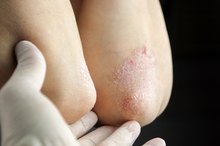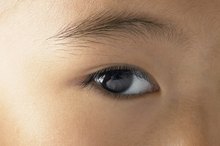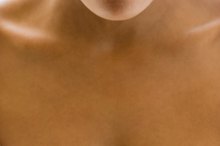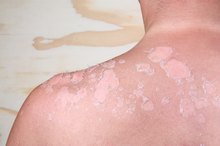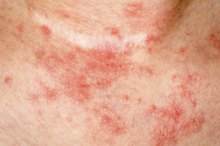What does fact checked mean?
At Healthfully, we strive to deliver objective content that is accurate and up-to-date. Our team periodically reviews articles in order to ensure content quality. The sources cited below consist of evidence from peer-reviewed journals, prominent medical organizations, academic associations, and government data.
The information contained on this site is for informational purposes only, and should not be used as a substitute for the advice of a professional health care provider. Please check with the appropriate physician regarding health questions and concerns. Although we strive to deliver accurate and up-to-date information, no guarantee to that effect is made.
What Is Alligator Skin Disease?
Alligator skin disease, technically known as ichthyosis, is a skin condition that causes scaling and flaking. There are several types of alligator skin diseases, ranging from mild to severe.
Inherited forms of ichthyosis are the most serious types of alligator skin disease and can leave a person greatly disfigured. While there are treatments for the condition, there is no cure.
Xeroderma
Xeroderma is a very mild form of ichthyosis that can develop at any time. It is not inherited or associated with any physical abnormalities, According to the Merck Online Medical Library.
Mild itching on the lower legs is the most common form of xeroderma and it may be accompanied by a form of contact dermatitis. Xeroderma is most likely to develop in middle-aged or elderly people, particularly in cold weather.
- Xeroderma is a very mild form of ichthyosis that can develop at any time.
- Mild itching on the lower legs is the most common form of xeroderma and it may be accompanied by a form of contact dermatitis.
Ichthyosis Vulgaris
Causes of a Skin Rash on Hands and Feet
Learn More
Ichthyosis vulgaris is the most common form of inherited ichthyosis. Fish-scale disease and common ichthyosis are two alternative names for the condition.
Ichthyosis vulgaris is a genetic disease that causes dry, itchy skin that resembles scales. The disease can develop early in childhood, sometimes before the age of 4, according to the MedlinePlus Medical Encyclopedia 1. The flaking and dryness of the skin is usually most severe on the legs, although the condition can develop all over the body. Ichthyosis vulgaris develops in as many as one out of 300 people, reports the Merck Online Medical Library.
- Ichthyosis vulgaris is the most common form of inherited ichthyosis.
- Ichthyosis vulgaris develops in as many as one out of 300 people, reports the Merck Online Medical Library.
X-Linked Ichthyosis
X-linked ichthyosis is another inherited form of ichthyosis. Other names for this condition are steroid sulfatase deficiency and recessive x-linked ichthyosis.
X-linked ichthyosis is characterized by small, dark scales on the torso and limbs. It affects only males, although females can carry the gene that causes x-linked ichthyosis.
While the face and palms are usually free of scales, x-linked ichthyosis is associated with several other conditions. The Foundation for Ichthyosis & Related Skin Types (FIRST) reports that half of all patients have white spots in the corneas of their eyes, 20 percent of patients may have undescended testis and in rare cases, mental retardation may be present 2. Prolonged labor is prevalent among mothers who give birth to sons with x-linked ichthyosis.
- X-linked ichthyosis is another inherited form of ichthyosis.
- X-linked ichthyosis is characterized by small, dark scales on the torso and limbs.
Lamellar ichthyosis
White Blotches on Elbows
Learn More
Lamellar ichthyosis is a rare form of ichthyosis that first develops in newborns 2. It is an inherited condition that causes the development of large, dark scales on most of the body. Layers of this scaly skin will continuously flake and fall off. Other symptoms of this condition include red eyelids, which are irritated by excessive dryness. Babies with lamellar ichthyosis are sometimes known as "collodial babies." A lifelong condition, those with lamellar ichthyosis are susceptible to skin infections and may be intolerant to heat.
- Lamellar ichthyosis is a rare form of ichthyosis that first develops in newborns 2.
- A lifelong condition, those with lamellar ichthyosis are susceptible to skin infections and may be intolerant to heat.
Epidermolytic Hyperkeratosis
Epidermolytic hyperkeratosis is another rare form of inherited ichthyosis. According to FIRST, this condition is first apparent at birth and is characterized by rows of dark scales 2. These scales are usually found near large joints and are susceptible to blisters and infection. Another characteristic of epidermolytic hyperkeratosis is sparse hair and thick nails.
- Epidermolytic hyperkeratosis is another rare form of inherited ichthyosis.
- Another characteristic of epidermolytic hyperkeratosis is sparse hair and thick nails.
Acquired Ichthyosis
It is possible for people to acquire ichthyosis from certain diseases or drugs.
According to the Merck Online Medical Library, ichthyosis is sometimes an early symptom of systemic diseases like leprosy, hypothyroidism, lymphoma and AIDS. Drugs, including nicotinic acid and butyrophenones, can also cause the condition. Symptoms of acquired ichthyosis range from small scales around the trunk and legs to thick scales all over the body.
- It is possible for people to acquire ichthyosis from certain diseases or drugs.
Treatment
All cases of ichthyosis should be treated with moisturizers. Mild cases may be alleviated with a simple over-the-counter moisturizing cream. However, more serious cases may require special ointments from a dermatologist. Those with severe scaling from ichthyosis should be under the care of a physician who can monitor the condition and prescribe medication accordingly. Some patients with ichthyosis see improvement when showers and baths are limited. It is important to moisturize directly after bathing or showering. Soaps that dry out the skin should also be avoided. Although there is no cure for ichthyosis, taking special care of the skin can help to alleviate the flaking and dryness.
- All cases of ichthyosis should be treated with moisturizers.
- Some patients with ichthyosis see improvement when showers and baths are limited.
Related Articles
References
- MedlinePlus Encyclopedia on Ichthyosis
- FIRST
- "Types of Ichthyosis." About Ichthyosis. Foundation for Ichthyosis & Related Skin Types. 11 Jul 2008
- Hereditary and Acquired Ichthyosis Vulgaris. Medscape. (2015)
Writer Bio
Amy Simpson is a copywriter, editor and blogger. She holds a Bachelor of Arts in English from University of Texas at Arlington and has specialized in new media writing for more than a decade. Simpson has written and edited content for outlets such as 4Kids Entertainment, Discovery Channel, FOX Television and MSN.

